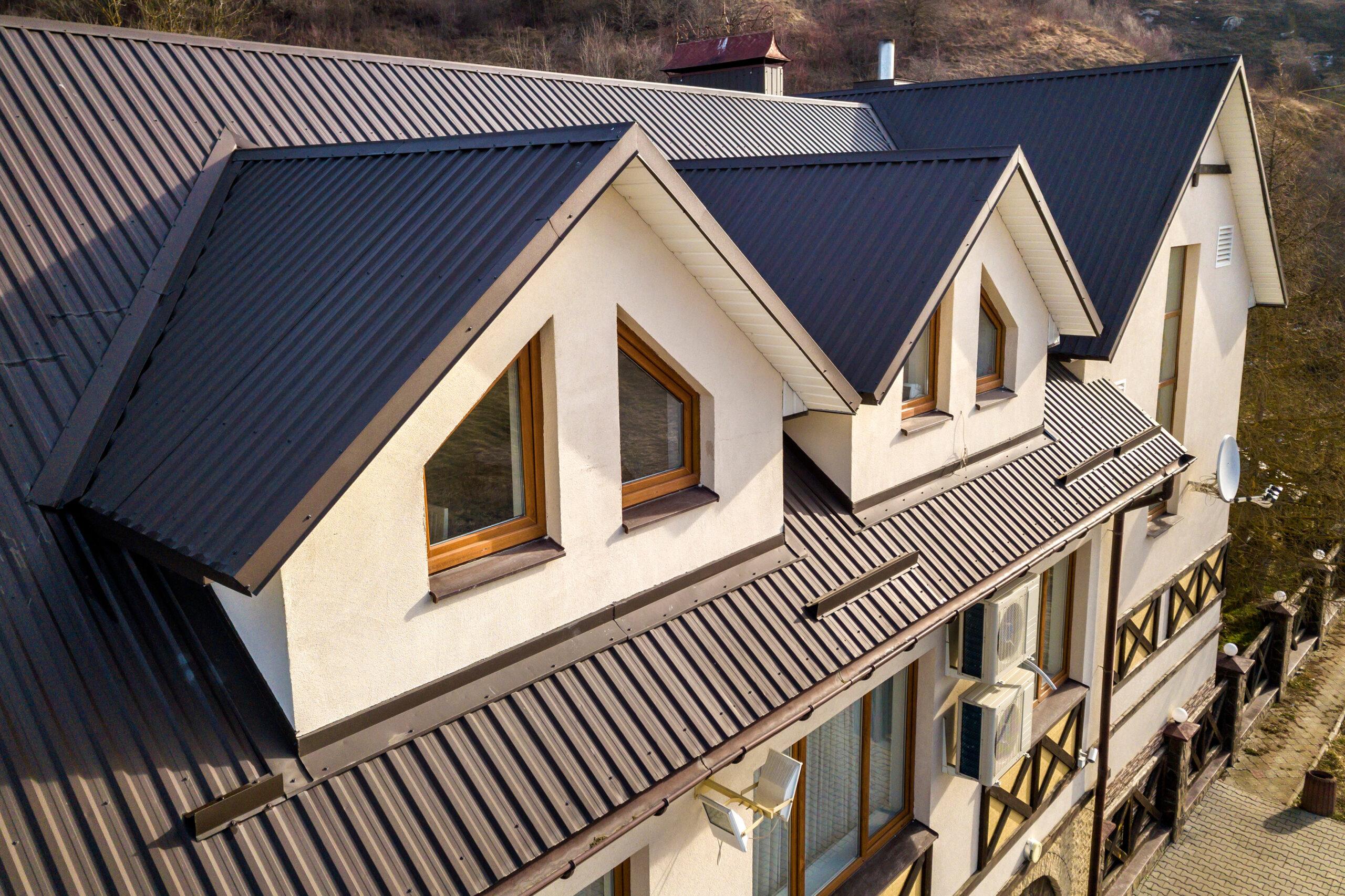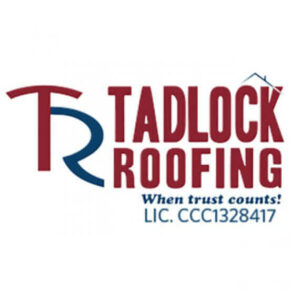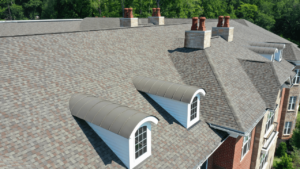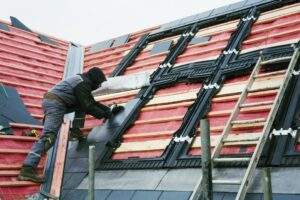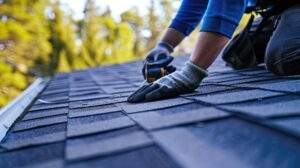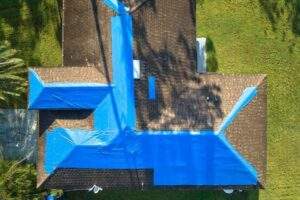Roofing myths are everywhere, and believing them can actually cost you more in the long run. From thinking a leak is a simple DIY fix to assuming a roof only needs attention when something goes wrong—these common misconceptions can lead to expensive mistakes.
The truth? With the right info, you can keep your roof in top shape, protect your investment, and avoid surprises. That’s why we’re focusing on roofing myths debunked to help you make informed decisions.
Some myths sound like common sense, but they often leave homeowners guessing. For example, a lot of people think they only need a new roof if theirs starts leaking. In reality, waiting for leaks can make things much worse.
Breaking down these myths can help save money and prevent unnecessary headaches.
Here are some common myths we’re setting straight so you can make smart choices and keep your home safe!
Key Takeaways
- Common beliefs about roof maintenance often miss important details that only experts can catch.
- Quick, temporary fixes may save time now but can lead to bigger, pricier problems later.
- Going for the lowest-cost option often results in poor durability and added expenses down the line.
- Roofing professionals provide specialized expertise that DIY repairs or general handymen typically can’t match.
- Rely on facts, not assumptions, to keep your roof—and home—secure.
Myth #1: “If There’s No Visible Damage, The Roof Is Fine.”
Reality Check:
Just because you don’t see damage doesn’t mean your roof is totally sound. Roof issues can develop in areas that are hard to spot, like under shingles, in the attic, or along seams.
Hidden Risks to Watch Out For:
- Leaks: Water doesn’t always make itself obvious right away—it can trickle in behind walls or under shingles, silently damaging your home. Water infiltration can lead to mold growth, which can negatively impact indoor air quality.
- Deterioration: Roofing materials can break down from exposure to the sun, moisture, or simply age, leaving parts weak without showing visible signs.
Pro Tip:
Regular roof inspections by a professional can identify potential issues before they escalate. Ignoring the need for periodic checks can result in costly repairs later on. This myth can prove costly in terms of both time and money.
Myth #2: “Leaks Are Easy To Fix As DIY Roof Repairs.”
Reality Check:
Sure, a little leak might seem like an easy DIY fix, but leaks are usually more complex than they appear. The tricky part is that water can travel along beams, barriers, and layers, making the real problem hard to find.
Risks of DIY Fixes:
- Hidden Damage: Water can cause damage to areas you can’t see, like insulation, beams, and inner walls.
- Improper Repairs: Without the right techniques or roofing materials, you could end up with temporary fixes that don’t hold up, leading to more leaks.
Pro Tip:
A roofing pro can track down the true source of the leak and repair it correctly, keeping your home safe from future water damage. DIYing a leak fix might save a few bucks now but can end up costing more later.
Myth #3: “Choosing The Cheapest Option Will Save Money.”
Reality Check:
Opting for the lowest price may seem like a good way to save, but it often comes with hidden costs. Cheap roofing materials or labor can mean repairs sooner than you’d like.
Why This Costs More Over Time:
- Short Lifespan: Low-quality materials usually wear out faster, meaning you’ll likely need a replacement sooner.
- Increased Bills: Poor insulation from a budget roof could spike your heating or cooling costs. Asphalt shingle roofs, while affordable, may have drawbacks such as poor energy efficiency and heat absorption, leading to higher temperatures in homes during summer months.
Pro Tip:
Paying more upfront for quality roofing materials and skilled labor will save you from future repairs, enhance home value, and keep your energy bills down. In the end, quality is a solid investment.
Myth #4: “A Handyman Can Fix The Roof With Materials From A Home-Improvement Store.”
Reality Check:
While your neighborhood handyman might be great at fixing cabinets or doing small repairs, roofing isn’t a one-size-fits-all job. Roof repair calls for specific materials and techniques that only experienced roofers typically know.
Why It’s Risky:
- Material Suitability: Roofing materials available at hardware stores aren’t always up to professional standards, which can mean quicker wear and tear.
- Proper Installation Techniques: Roofing requires precise techniques to prevent leaks and weather damage that a general handyman might not have.
Pro Tip:
Hiring a certified roofer ensures you get the right roofing materials installed the right way, keeping your roof watertight and sturdy. Cutting corners here might cost you more down the road in repairs and replacements.
Myth #5: “Paying A Large Sum Upfront Is Standard For Roof Repairs.”
Reality Check:
If a contractor asks for full payment before work starts, consider it a red flag. Most reputable roofing companies will only require a small deposit upfront to cover initial costs, like materials.
What to Look for in Payment Terms:
- Upfront Payment Structure: A small deposit is normal, but trustworthy contractors usually bill you as they hit milestones, not all at once.
- Get It in Writing: A clear contract with outlined payment terms keeps things transparent and protects you from unexpected costs.
Pro Tip:
Avoid scams by researching and hiring licensed contractors who offer detailed estimates and payment schedules. A reputable contractor will never pressure you for large sums upfront.
Myth #6: “All Roofs Are the Same, So Any Roofer Will Do the Job Right.”
Reality Check:
Not all roofing companies are created equal, and the quality of roofing materials and workmanship can vary widely. Choosing a roofer based solely on price or availability can lead to issues like improper installations or subpar materials. These can shorten your roof’s lifespan or lead to costly repairs.
What Matters More:
- Check Reviews: Customer feedback and reviews are often a better gauge of a company’s reliability.
- Look for Certifications: Confirm the roofer has proper licensing and qualifications beyond just a membership.
Pro Tip:
Do your own research. Look for contractors with a strong reputation, certifications, and experience, rather than relying on memberships alone.
Myth #7: “Lifetime Warranties Cover Everything.”
Reality Check:
Not all “lifetime” warranties are created equal. Many have specific terms, conditions, and are often prorated—meaning that after 10+ years, coverage may only be worth a fraction of the roof’s original value.
Warranty Fine Print:
- Limitations: Many warranties exclude damage from things like storms or owner neglect.
- Maintenance Required: Some warranties are only valid if the roof is regularly maintained, so keep records of inspections.
Pro Tip:
Read the warranty details and understand what’s covered and what isn’t. Keep up with maintenance and save records to make sure you’re fully protected.
Myth #8: “Metal Roofs Are Noisy.”
Reality Check:
Many people picture metal roofs as noisy, especially in the rain, but modern metal roofing is typically no louder than other types thanks to sound-dampening underlayment.
What Makes Metal Quiet:
- Insulation: Proper insulation beneath the roof can cut down on noise, making metal roofs surprisingly quiet.
- Modern Design: Today’s metal roofs use advanced construction to minimize sound, making them just as peaceful as shingles.
Pro Tip:
Don’t let noise worries stop you from considering a metal roof. When installed with the right materials, metal roofs can be both quiet and incredibly durable.
Myth #9: “Roofing Work Shouldn’t Be Done in Winter.”
Reality Check:
Roofing can be done year-round with the right steps and precautions, even in colder months. While winter roofing may require extra care to ensure materials set correctly, experienced roofers are equipped to handle installations in all seasons.
Weather-Dependent Factors:
- Cold Temps: Shingles may become more brittle in the cold, but specialized techniques can ensure proper installation.
- Additional Precautions: Professional roofers take extra measures to protect materials and ensure the roof system withstands winter conditions.
Pro Tip:
Plan roofing projects for spring or fall when weather conditions are more predictable. This helps avoid delays and ensures quality work.
Myth #10: “Roof Replacements Are Always Needed After A Storm.”
Reality Check:
Not every storm means a full roof replacement. Many types of storm damage can be fixed with spot repairs, saving you from a costly replacement.
Common Types of Storm Damage:
- Minor Shingle Damage: Can often be repaired individually without redoing the whole roof.
- Debris Buildup: Sometimes, debris removal is all it takes to avoid leaks.
- Flashing Issues: Often repairable without replacing the entire roof.
Pro Tip:
After a storm, get a pro to inspect the roof and assess the damage. Often, repairs are all that’s needed, which can save you money.
Final Thoughts: Get Expert Help from Tadlock Roofing
Busting these myths is key to keeping your roof in good shape. Tadlock Roofing is here to help with any questions, inspections, or repairs you need. Need a reliable check-up or want to talk about an issue? Give us a call at (800) 930-2905 or fill out our online form to keep your home safe and your roof lasting longer!


